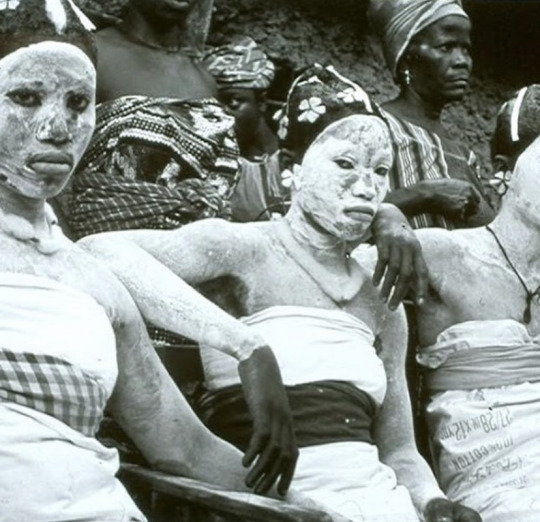#temne
Text


#temne#kru#mandika#sierra leone#liberia#senegal#african ancestry#regina king#boondocks#the boondocks
128 notes
·
View notes
Text
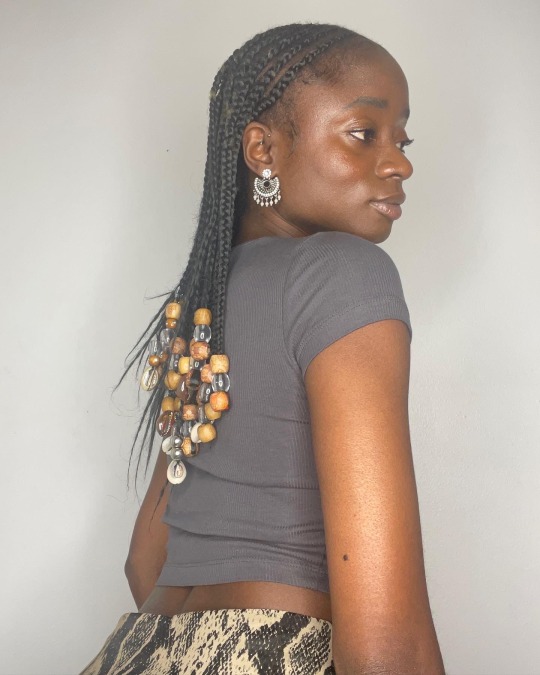

Asma Kamara
#asma kamara#sierra leone#black models#black artists#asma#west africa#dark skin#salone#los angeles#brown skin#asmakamara#tekyabreathaway#ahsmah#ahs-mah#brand#wooden hair beads#cornrows#fulani#fulan musu#temne#i am gia#iamgia
23 notes
·
View notes
Text
Hey guys the finale of my Vol.1 video essays "ZIMA BLUE: THE ART OF FINDING JOY IN THE PROCESS" is here. Thank you all for your support and I hope you enjoyed this episode of Love, Death, and Robots like I did. Like, share and subscribe. Hope you're well 💜🙏🏽
youtube
7 notes
·
View notes
Text

Did you know OTHER characters that aren't Axim exist in my big main story? Here's a number of headshots of a few of them gathered from some of my sketching sessions :)
(And Elix, who is not a part of that story, oop)
#Kastdoodles#Sylvie#Temn#Elijah#Elix the Eyeman#Avina#Stanley#Genevieve#Vyn#I think that's everyone on there lmao#I have literally never told ANYONE the full story of MU#I'm v secretive >:)#One day everyone will know how much time I've put into this thing lmao#TheFeelingsMutual
9 notes
·
View notes
Note
For the ask game 22 and/or 23 >:)

23 - what's something you hope people notice when looking at your art
I color pick from pride flags sometimes to pepper in the fact that I am not straight but it turns into an echo of deviantart OC's with rainbow hair.
#a good reminder for me to go back and tag everything with tw eyestrain#thank you for the ask :d#makaci temn
9 notes
·
View notes
Note
Hope it’s not too late
Here’s my oc Temn Kri. A force sensitive devaronian with a strange intuition to the force



Thank you for submitting to the OC Art Event!
13 notes
·
View notes
Text
African leaders in Sierra Leone played a key role in ending the transatlantic slave trade

Freetown, the capital of Sierra Leone on the west African coast, was named for the freed slaves who were returned to Africa by British members of the movement to end slavery. Founded in 1787 by a group of 400 black Britons from London, the colony ultimately became a refuge for nearly 100,000 people resettled by the British Anti-Slavery Naval Squadron.
As a historian focusing on the impact of abolitionism, I have studied this history and the founding of modern Sierra Leone.
There is a misconception that Britain was the first to abolish the slave trade. It wasn’t the first, but its decision to abolish the trade was backed up by the power of its navy. Sierra Leone’s role in the story shows, however, to enforce that abolition, the British navy had to rely on the support of African states and polities that had already turned against the slave trade.

Africans played an overlooked role in ending the transatlantic slave trade. Sierra Leone’s rich history is testament to that.
The founding of Sierra Leone
The Atlantic Slave Trade began around the 1520s, but the area around Sierra Leone was not a major contributor to the trade before the middle of the 1700s. From 1763 onwards, the number of enslaved people shipped annually from the Sierra Leone coast by British, Portuguese and French traders rarely fell below 1,000 and was often closer to 4,000. Even then, the number of captives was roughly half the number being transported from the Gold Coast (Ghana), a quarter of the number being transported from the Bight of Benin, and a tenth of the number transported from the Angolan coast.
And yet from 1808, it was Sierra Leone – rather than one of the other sites of slave trading – that became the site of British anti-slavery operations. This was because by then, Sierra Leone was the site of an established and growing colony made up of members of the black British diaspora, many formerly enslaved. And the success of that colony was possible in part because of the interest and engagement of the Temne, the Susu, and other African people based in and around the Sierra Leone peninsula.
In 1787, the first group of black Britons arrived on the peninsula as part of a project in self-government and with the support of the London-based abolitionist leaders Granville Sharp and Olaudah Equiano. The first settlement faced hardships and lacked support among the Temne, whose land they were renting.
The settlement grows
In 1791, another group arrived in the colony and sought out a new treaty of settlement. This group chose to immigrate to Sierra Leone from inhospitable Nova Scotia (Canada), where they had been settled by the British government as “black loyalists” after fleeing from slavery during the American Revolution (1776-1783). A new organisation, the Sierra Leone Company, took over the management of the colony from London. Their records show that by the early 1790s, the Temne saw the arrival of these colonists as an opportunity.
King Naimbana, for instance, who negotiated the treaty between the Sierra Leone Company and the Temne, sent his son to London for education. And in their negotiations, company officials noted that the people they were engaging with were keen for opportunities to trade for imported goods without reverting to selling other people.
African role in ending slavery
As I found in my research, it was African demand that was shaping the success of the colony and its mission to shift the coast’s commerce away from the slave trade. Records held at the Huntington Library in California show that local buyers paid a higher price for the “SLC” mark – a price paid in goods and currency, rather than in enslaved captives. One British representative wrote a letter in 1793 to the Sierra Leone Company to complain that “it has become practice with slave traders to bring out guns for trade marked SLC for which they get a rapid sale and a double price in the Rio Nunez” to the north of the colony. He also worried that this was happening with “SLC” cloths.
Although he was unsure of their enthusiasm for the abolition of the slave trade, the British official commented that “their mouths were full of proposals to trade with us and plant cotton and coffee”. And a Susu leader’s deputy launched a verbal attack against the slave traders, telling them:
It is you slave traders who cause all our palavers. It is you who set the people in this country one against another. And what do you bring us for this? We have cloth of our own if you were gone tomorrow we should not be naked. If you were gone we should want but little guns and powder.
This support of the Susu and Temne around Sierra Leone for the colony, its trade, and its African diaspora population meant that the colony seemed like a natural fit for the British when they were looking for a way of enforcing their Slave Trade Act in 1807 to end the Atlantic slave trade. The British based an anti-slave trade naval patrol in the colony, as well as a court for processing captured slave ships.
The Sierra Leone Company was happy to hand over control to the British government, but it was the people on the ground whose successful trading relationships had built a growing city with markets, accommodation, infrastructure and, most importantly, a sense of security for the thousands of resettled enslaved people who would soon see its population soar.

Conclusion
There is a misconception that Britain was the first to abolish the slave trade and that it brought enlightened anti-slavery ideas to Africa. This misconception was used to justify the spread of colonial rule in the 19th century. But the history of Sierra Leone shows that, in order to enforce their abolition decrees, the British had to rely on African states and polities that had already turned against the slave trade.
#African leaders in Sierra Leone played a key role in ending the transatlantic slave trade#slavery#enslavement of Africans in america#transatlantic slavery
10 notes
·
View notes
Note
TSUKASA
TEMNA
TSKSA
TMNA
TEMN
TSUKSA
i’m sorry lmao
These are some horrifyingly bad spellings of my name >:(
2 notes
·
View notes
Text
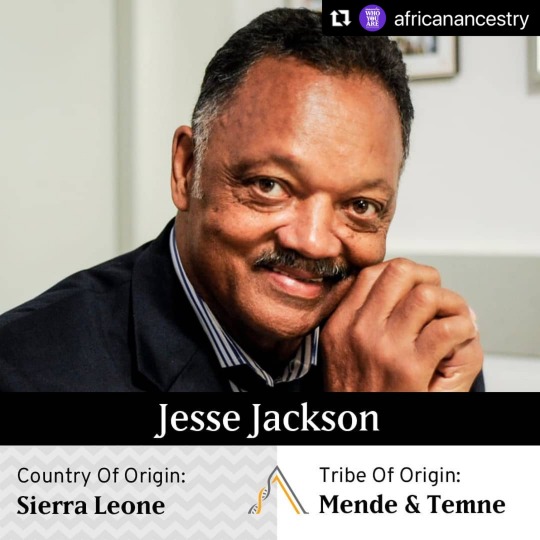

#Mende#temne#sierra leone#jesse jackson#african ancestry#african dna#deep brown skin#carmel brown#african#afrakan#kemetic dreams#brownskin#afrakans#brown skin
20 notes
·
View notes
Text
The melody of memory: the ancestral hymn that united two continents
In the summer of 1933, linguist Lorenzo Dow Turner (1890-1972) and musicologist Lydia Parish visited Amelia Dawley in Harris Neck, Georgia. This was a coastal community of Black landowners from the Gullah ethnic group. Turner recorded the song sung by Dawley, which the community had known for ages without understanding its meaning. This marked the beginning of a journey to their roots.
Origin of the Gullah Language
Turner was interested in Gullah culture, which had remained isolated from outsiders, especially white people. The Gullah people were descendants of slaves from plantations in South Carolina and Georgia, comprising individuals from the Mandingo, Bamana, Wolof, Fula, Temne, Mende, Vai, Akan, Ewe, Bakongo, and Kimbundu ethnic groups.
Turner hypothesized that their language was either an archaic or childlike form of English. To uncover this part of American linguistic history, which he would publish in "Africanisms in the Gullah Dialect," he first had to earn their trust. Through his research, he realized that Gullah had no trace of English and reasoned that it could have survived similarly to Pennsylvania Dutch, a dialect of German preserved through relative isolation. The study of their language indicated a common origin with the languages of Jamaica and Barbados, suggesting it originated from some part of West Africa. After years of studying their creole languages and African languages, he narrowed his search down to the Mende and Vai languages.
youtube
Among the data he recorded, in chapter 9 of his book, he published Dawley's song, considered the longest known African language song in the United States. Its meaning was unknown, but in 1941, his Sierra Leonean student Solomon L. Caulker recognized the repetition of the term "kambei" ("grave") in the Mende language. Thanks to this revelation, Turner was able to publish a translation of the funeral song:
Ah wakuh muh monuh kambay yah lee luh lay tambay Ah wakuh muh monuh kambay yah lee luh lay kah. Ha suh wileego seehai yuh gbangah lilly Ha suh wileego dwelin duh kwen Ha suh wileego seehi uh kwendaiyah.
Come together, let's work hard; the grave is not yet finished; let its heart be perfectly at peace. Come together, let's work hard; the grave is not yet finished; let its heart be perfectly at peace. Sudden death commands everyone's attention, oh elders, oh heads of families. Sudden death commands everyone's attention, like a distant drumbeat.
Turner's works became reference materials, but general interest in the Gullah people experienced a pause. Anthropologist Joseph Opala, who had lived in Sierra Leone for years and studied the ruins of slave trading centers, was the one who revived the interest.He began with the records from the Ball plantation in South Carolina and the slave ship and auction records discovered in New York, which showed a complete trace from Africa to the present day. In his documentary Family Across the Sea (1989), he gathered Emory Campbell and several Gullah leaders for a trip to Sierra Leone.
The Return of the Funeral Hymn
However, although enthusiastic about the idea, Sierra Leone felt it was not enough. They needed clearer links. That's when they collaborated with ethnomusicologist Cynthia Schmidt to find the origin of Dawley's song. They searched the district where they estimated its most likely origin, but found no one who knew it. This changed in the periphery, in Senehun Ngola, where they found Bendu Jabati.
Bendu Jabati had heard this song sung by his grandmother, who told him it was sung in honor of the ancestors. It was a hymn sung at funerals, associated with a very important ceremony for the Mendé: the Tenjami ("Crossing the River"). Knowing that it was a cultural element that could be lost, his grandmother taught it to him, along with the movements to show her mourning. The custom was for the men to prepare the grave, while the women pounded the rice. It was performed on the third day of a woman's funeral or the fourth of a man's, symbolizing the bridge between the world of the living and the dead. Relatives spent the night and part of the next day at the burial site performing the final rites. After preparing and eating rice, participants completed the ritual by turning over an empty pot of rice, leaving it on the ground as a farewell. This ceremony disappeared after World War I, when soldiers recruited by the British Army introduced Islam and Christianity upon their return.
youtube
The meeting took place in 1997 between Mary Moran (1921-2022), daughter of Amelia Dawley, and her family, with Bendu Jabati. They were welcomed by the president of Sierra Leone in Freetown and taken to Senehun Ngola, where they met Bendu Jabati. By that time, they had the full text of the song provided by Sierra Leonean linguist Tazieff Koroma and translated by him, Edward Benya and Opala. In Sierra Leone, the song was slightly different, possibly because of the development of the language over the intervening centuries. When Mary Moran and Bendu Jabati met, it proved that this hymn had survived another generation. This encounter was shown in the documentary The Language You Cry (1998).
A wa kaka, mu mohne; kambei ya le'i; lii i lei tambee. A wa kaka, mu mohne; kambei ya le'i; lii i lei ka. So ha a guli wohloh, i sihan; yey kpanggaa a lolohhu lee. So ha a guli wohloh; ndi lei; ndi let, kaka. So ha a guli wohloh, i sihan; kuhan ma wo ndayia ley.
Come quickly, let us work hard; the tomb is not yet finished; his heart has not yet grown cold. Come quickly, let us work hard; the tomb is not yet finished; let his heart be cool now. Sudden death cuts down the trees, borrows them; the remains slowly disappear. Sudden death cuts down the trees; let it be satisfied, let it be satisfied, at once. Sudden death cuts down the trees, borrows them; a voice speaks from afar.
Recognizing a Slave Girl
In Sierra Leone, however, they wanted an even more concrete connection: the name of a slave who had left their homeland. Despite the difficulty of the task, Opala found in the Martin family papers the name of Priscilla, a girl who was taken from Sierra Leone to Charleston in 1756. Although it is unknown exactly how she was obtained, contemporary records speak of abductions by other Africans, especially from enemy kingdoms, such as the Fula, Mandingo or Susu. They were kidnapped, prisoners of war, people convicted of crimes or sold to pay debts. In exchange, the British offered them guns, gunpowder, clothes, rum, metal goods and various trinkets. Of the 40 British slave castles or fortified trading posts in Sierra Leone, he would have passed through Bunce Island, the largest and only major castle on the Rice Coast. She would have come from the interior to the coast walking naked or with rags and bound hands. Before traveling by sea, she would have been branded and auctioned off. After surviving the rough voyage across the Atlantic on the ship Hare, she would have stayed 10 days in quarantine, being one of the few people in good condition, and then put to work in a rice field. Although the Hare was a British ship owned by the London owners of Bunce Island, New-York Historical Society records said it was an American slave ship owned by Samuel and William Vernon, two of the wealthiest merchants in colonial Rhode Island, sailing from Newport, Rhode Island.
In America, Priscilla would have fallen in love a decade later with the slave Jeffrey, with whom in 1770 she had three children and, in 1811, after his death, about 30 grandchildren. Her descendants continued to work on the plantation until early 1865, when the plantation was taken over by the Federals. Henry, one of his freed descendants, took the surname Martin and had ten children with Anna Cruz. Of these, roofer Peter Henry Jr. was born in 1886 and had Thomas P. Martin in 1933. At the time of the investigation, he was to have been the one to make the trip, but he died and was replaced by his daughter Thomalind Martin Polite, a 31-year-old speech pathologist at a primary school. Their reunion in Sierra Leone was shared in the documentary Priscilla's homecoming (2005).
In conclusion, although slavery attempted to erase the identity of its victims, they have the power to preserve the customs that connect them to their roots through the centuries. The song itself bridged the gap between the two shores, reuniting through their descendants those who had been separated.
4 notes
·
View notes
Text
akhir-akhir ini banyak banget yang mengkritik diri aku, padahal aku jarang muncul di antara orang orang ini. atau mungkin ada kesalan aku yg perlu di perbaikin (?) let me tell you how it’s happen.
Pertama, ini di hari siang bolong, tiba tiba teman di A ngomentari aku karena aku terlalu banyak omong. but, hey, i don’t even talk to them (?) then why she comments me that way?😂
then, di depan lab, ada temen cwek aku lagi gunting kuku. aku degn temn aku ini emang dket lah ya. trus aku remaind dia, “eh kamu kurban nggak?” “emang kenapa?” “klo qurban jgn potong kuku dulu” gitu. trus nih ada yg nimbrung orang lab (L) “kau galak dak nikah dengan nisa ini?” ngomonin aku ke adek kelas.
like, hell… why you shout like that involves our conversation. i did not even know him! bahkan itu juga bkn percakapan kau.
dari situ aku trus memikirkan kekurangan aku dari banyak pendapat orang. apakah aku kurang cantik, kurang putih, terlalu gendut, langsung pengen selesai dengan urusan itu degn cara punya pacar. ih kan. apalah pikiran aku ini.
tpi jujur pikiran kek itu tuh nggak hilang dari keseharian aku yg cuma di rumah with nothing to do. aku jga lagi liat liat beasiswa s2… yg buat aku makin makin insecure atas diri ini😭
3 notes
·
View notes
Text
I FUCKING WROTE A WHOLE STROY YEAH and it GOES SOMETHING like Thaísa
The estro-outbreak
It was a cold winter night , I was returning from my dead end job I was working in Iowa , the same repetitive routine , walking to and from work through the suburban-matrix life style I was living , it seemed to be no different from other days until I noticed something strange , it seemed a young girl suddenly grabbed on tight to me as if she was hugging me , I was caught off guard from this and fell to the ground , regaining my composure I looked up to see a woman with short almost curly brown hair staring down at me , but this woman wasn’t…a woman IT WAS A FEMBOY , it stared down at me as I watched in horror for what felt like hours until I ran , ran home and locked myself in my house (in 1983 Metallica released their first ever album kill em all starring a young James hetfield , lars ulrich , Kirk hammet and cliff burton , the album contained hit songs such as seek and destroy , the four horsemen , anaesthesia (pulling teeth) etc , this album was an extremely important part of the metal community due to its impact on Metallica and Metallicas impact in the metal community)
I sat in my couch , pondering , unsure of what I had just experienced, I thought I’d turn on the TV to watch kindergarten cop , it was my favorite movie after all until an emergency news report states a strange virus affecting men and women is causing people to turn into femboys , I stared in horror as the news explained how the virus would release estrogen into a males body and a dampened version of testosterone causing penis growth and tiddie (honkers) reduction . As I sat in my living room horrified I heard a noises in my garage and I knew it was them , I grabbed a baseball bat and was ready to raise hell
1,2,3 the foul beasts lunged at me (when Metallica released their album ride the lighting Metallica made a filler song called escape , this song was played only once live and then the band vowed to never play the song ever again because it fit the band and it was rushed) I absolutely maniggalted the First one and hit it in the head with a baseball bat causing blood to spew out everywhere the other ones started to undress and then I said to myself fuck no and got the fuck outta there becuase that shit gay ngl (Metallica set a Guinness World Record for becoming the first musical act to perform on every continent. The band headed to Antartica in 2013 to perform at Carlini Base. Metallica and Coca-Cola organized a competition for fans to win tickets, where the fans also received a weeklong Antartica cruise)
I was about to leave my house until I remembered the local ww2 bunker k lived 5 minutes away from and then I ran there I guess , until suddenly BANG KABLAMO BOOM BANG ROOORAAAR a large nuke was dropped and I looked in awe as Temne fiery mushroom cloud engulfed everything around it in mere seconds. (James Hetfield started playing guitar back in middle school where he met Ron McGovney. Ron McGovney played regular six-string guitar at the time but would later play bass in Metallica for less than a year. In 1979 and '80, a teenage James Hetfield played in his first band which was named Obsession. They played covers of Led Zepplin, Deep Purple, UFO, Scorpions and Black Sabbath in peoples backyards and at parties. The only singing James would do at that point were on UFO songs like “Doctor Doctor.” Eventually Obsession disbanded and James briefly joined another band called Syrinx, which exclusively played Rush songs. Next James formed the band Phantom Lord, which had Ron McGovney on bass guitar. James taught Ron how to play bass guitar because they desperately needed someone on bass guitar. Before this Ron had only played guitar. Next in June 1981 Leather Charm was formed by James Hetfield and Ron McGovney.)
1 month after the nuke was dropped I receive a radio signal to the last human colony unaffected by this disease on earth I decided I was gonna walk there myself and make the long weeklong journey all the way to Mexico
)In 1973 Lars Ulrich decided at the age of 10 to take up the drums after seeing Deep Purple in concert. He had planned to become a professional tennis player like his dad before this, but now he had a passion for hard rock and heavy metal. At 16 he and his family moved from their home in Denmark to Los Angeles. About five months after moving to America James Hetfield responded to an ad he had written, and the two founded Metallica.)
Ok so I did this really epic awesome journey now I have this awesome furry deer girlfriend and I’m friends with Donald trump and Dave Mustaine from Megadeth and we’re running into the metal gates of the last remaining of society until suddenly I trip and I say to trump “go on donaldson , go into the gate with davey” “thank you humphrey you were a true American” Donald trump says to me I give my furry wife the most so I kiss and then slap her ass or something I can’t remember and then I have this awesome speech about the us economy and homosexuality and then I run into the crowd of femboys and sacrifice myself
Until I wake up in my minecraft bed and realise it was all a dream (my mom made tuna sandwiches after)
7 notes
·
View notes
Text
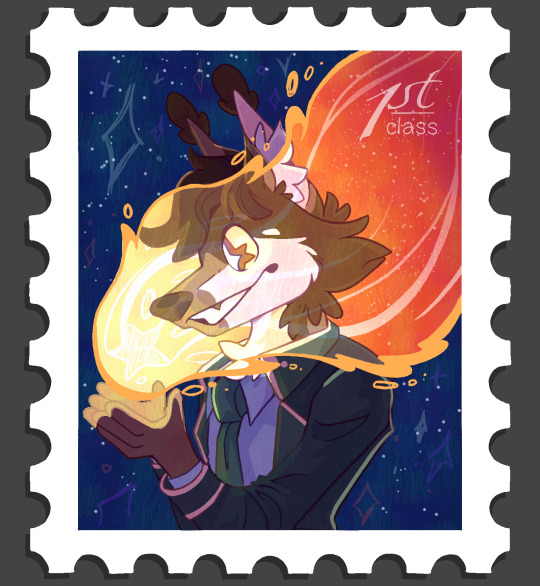
Wake up, another stamp just dropped
1 note
·
View note
Note
temn tem temhello hello!! i bap you on the face like a Cat
HIIHIHIHIH ANT !!!! i bap u back

6 notes
·
View notes
Photo
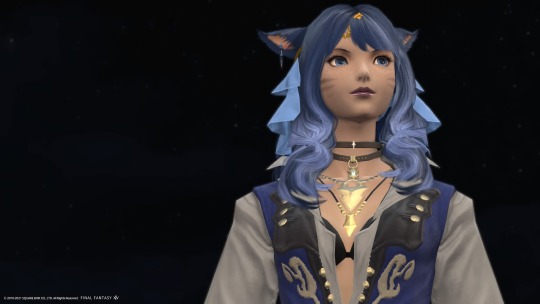
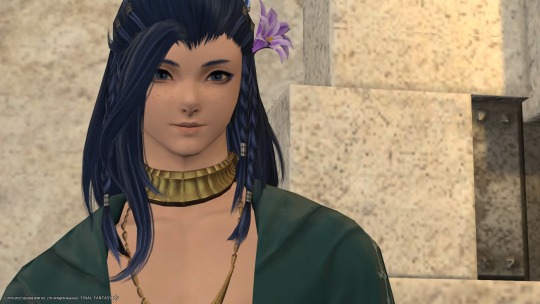
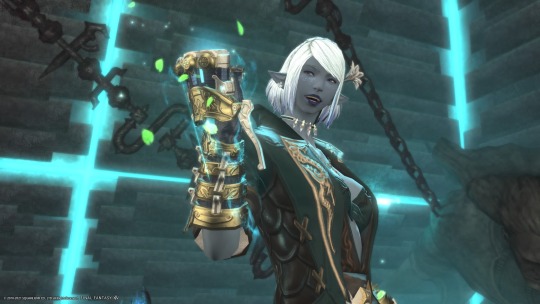




Since I post about FFXIV a lot these days and still need to get around to finishing a carrd, here’s a post introducing the various characters I play!
Xylha Clarystella (Coeurl), disaster lesbian dragoon. She is light and love!
Cly Temnes (Coeurl), erstwhile Azem and enemy of gender. Cly is short for Clytemnestra but they’re not particularly fond of the name. Soulmates with Hermes which will definitely not cause problems later.
Astrelle Labe (Malboro), a very normal botanist and seedkin domesticator. Was fused with an elemental during the Calamity and hates Gridania almost as much as she loves plants.
Sanitary Napkin (Sephirot), a Roe with a lore appropriate name that honestly deserves better. Absolutely stunning.
And now for the NPC alts:
Fancy Daniel (Balmung), the tiniest and most stylish Fandaniel. Recently married for fashion and science!
Nyameric’de Purrel (Coeurl), catboy Aymeric who would like to believe he’s a perfectly normal Aymeric. How do you do fellow Elezen?
Erika Bunnios (Halicarnassus), what if Erichthonios but girl and also bnuuy? I can’t stop looking at her.
Xylha is caught up on MSQ so I’m bouncing between everybody else. I play this game too hecking much. I’m still trying to get into in-game RP but haven’t found a good entryway yet.
I also play on console which makes posting screenshots a little cumbersome. I’m more active on my xiv twitter since crossposts are easier. So there you have it!
2 notes
·
View notes
